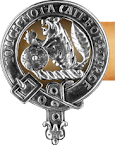What Did They Drink?
or
Thirsty Thursday
It may seem like a pretty innocuous question, but just what did our ancestors drink? I mean, coffee wasn't around until 1668 in America, and was considered for the wealthy only! The cost to have it shipped to America was astronomical! Tea was the same! Both were so expensive that they were often kept in locked chests to prevent thieves from absconding with it!
Whiskey was a "man's" drink, and ladies seldom partook. Although the lighter refreshments of wine were sometimes imbibed by the fair sex.
Citrus fruit and sugar were not common in those early days. And when they did arrive, again they were considered very expensive, and the common people did not have access to this. At least not in quantities to squander for simple drinks! Not until about the mid 1800's was the use of sugar more common.
There was, of course, milk, when one had a cow. But between large households, children and baking often took up most of the milk.
Wells were dug by hand. Men literally lowered into the holes as they were dug, and earth brought up bucket, by laboring bucket, until the well began to get damp. At this point, stones were sometimes used to line the walls of the well and allow for some clearer water to filter, but the tops were often left open. This meant a breeding ground for insects during the summer months. And the occasional rodent, or other creature that might wander too close to the edge met its untimely death by falling into the watery shaft. The water was often muddy during the rainy seasons of spring and summer. Bringing a pitcher of brown colored water to the table for a meal was not unheard of.
And yet, water was, and still is, the number one drink around the globe today.
Our ancestors, especially those who first came to America's shores, often built a privy (outhouse) right beside a well. This was for convenience. However, they did not understand sanitation, and typhus and cholera epidemics often occurred during those early years.
Many of the early settlers soon realized that the Native Indians to the country seldom suffered any of the maladies that they (non-Natives) did. And upon further investigation, some came to realize that the Indian thought of the water as alive. And it was this "alive water" that they would drink. What was the difference between "alive water" and "bad water"? Alive water was water that flowed. It tumbled over stones and moved continuously, thus filtering itself. Not like the man made wells that simply filled up with water and sat there waiting to be muddied up,or have animals fall into it.
Although it is not seen so much today, as late as the latter part of the 1960's, it was not uncommon to find a pitcher of water set upon the dinner table, and everyone's glass filled with chilled water, rather than other drinks.
It is still considered the norm when going to a better restaurant to have a glass of water brought to the table prior to beginning the meal.
And there really is nothing as refreshing as a cool glass of water on a hot day! It refreshes you, and quenches your thirst. It hydrates your body. And keeps your body functions within a normal parameter.
So, the next time you uncap that bottle of refreshing spring water, take a sip and remind yourself that you could be drinking water from a source one of your ancestors also drank from! And that you are enjoying one of the world's healthiest, and oldest drinks known to mankind.
Cheers my friends!












No comments:
Post a Comment